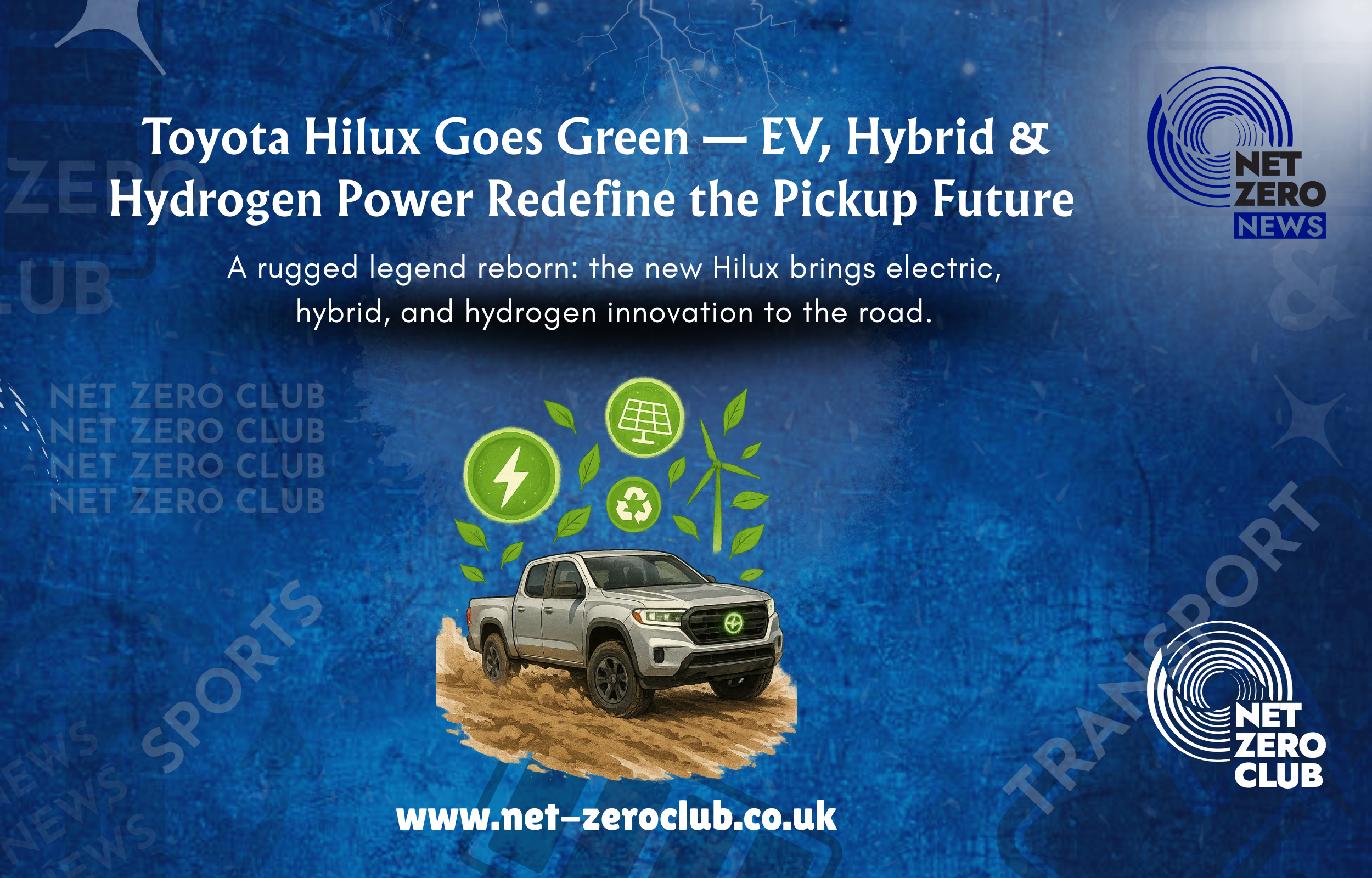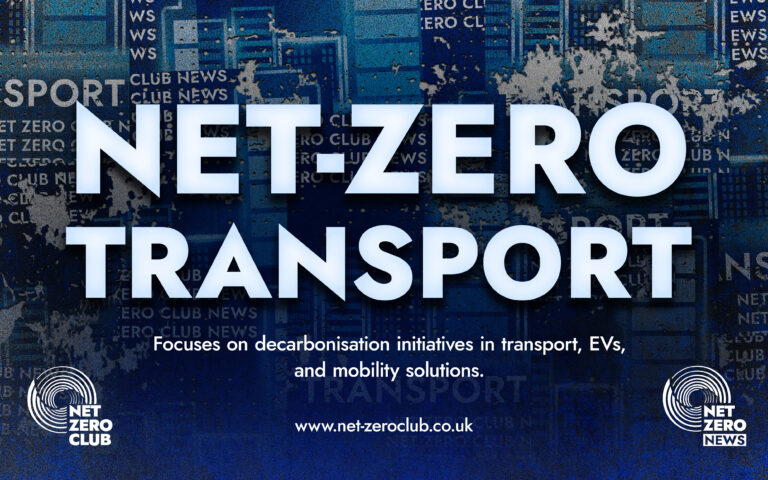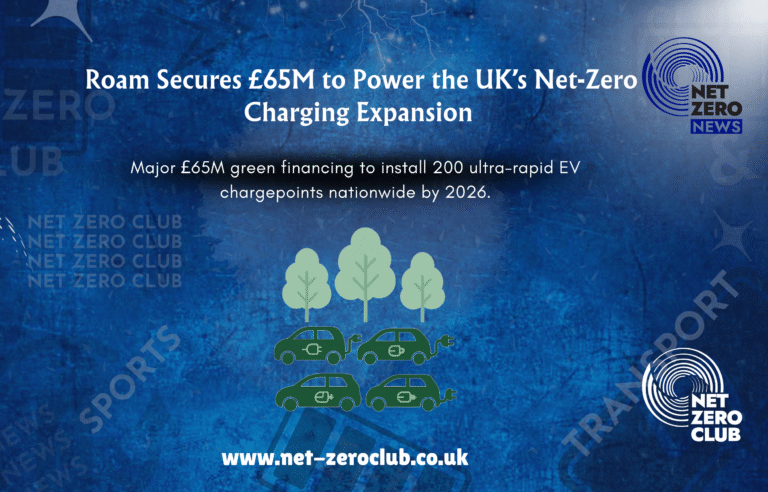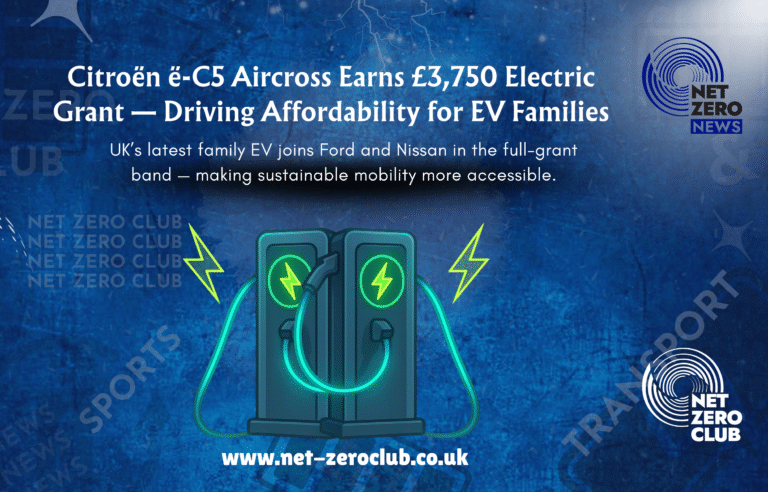Explore the New-Gen Toyota Hilux: EV, Hybrid & Hydrogen Options

Hello, Champions of Net Zero!
The automotive landscape is set to undergo a significant transformation as Toyota unveils the next generation of its iconic Hilux pickup, a model that has long been synonymous with reliability and ruggedness. With an eye firmly on sustainability, the new Hilux will offer fully electric and 48V mild hybrid diesel versions, along with a hydrogen fuel cell variant anticipated to launch in 2028. Set to hit the UK market in June 2026, this latest iteration of the famed pickup promises not only to meet the demands of eco-conscious consumers but also to uphold the Hilux legacy of strength and versatility.
The ninth generation Hilux will be exclusively available in a double cab configuration, responding to customer preferences while incorporating a fresh “tough and agile” exterior design. This redesign draws inspiration from the latest Land Cruiser, elevating both aesthetic appeal and functionality. The interior has also seen significant upgrades, boasting improved “sensory quality” that ensures a comfortable ride whether on or off the road.
Among the noteworthy advancements is the fully electric variant, Toyota’s first foray into electric pickups. This model is expected to attract fleet customers eager for a zero-emission vehicle that does not compromise on practicality, quality, durability, and off-road capability. The electric Hilux will be equipped with a 59.2kWh lithium-ion battery, powering dual electric motors that provide all-wheel drive. With a total power output of 196hp, the front motor generates 205Nm of torque while the rear motor delivers a robust 268.6Nm. Preliminary data indicates that this version will offer a payload capacity of around 715kg and a towing capacity of 1,600kg, along with an estimated WLTP driving range of approximately 150 miles.
While details regarding charging capabilities remain under wraps, Toyota is striving to establish best-in-class specifications that will minimise vehicle downtime, ensuring that the electric Hilux remains a practical option for daily use. The Hilux BEV maintains the brand’s signature body-on-frame construction and is specifically engineered for off-road performance. This includes protective measures designed to shield the battery from damage and water ingress, with wading depth comparable to the current internal combustion engine (ICE) models.
Another exciting feature of the new Hilux is its Multi-Terrain Select system, which adapts the vehicle’s performance based on different off-road conditions. This system utilises brake and torque control to enhance driving in varied terrains, akin to driving in low-range four-wheel drive in traditional vehicles.
Moreover, the new Hilux will also introduce the 2.8D 48V mild hybrid diesel variant, which has already joined the existing Hilux lineup earlier this year. Expected to be a volume seller across Europe, this model integrates the current 2.8-litre turbodiesel engine with an electric motor-generator, a 48V lithium-ion hybrid battery, and a DC-DC converter. The mild hybrid technology enhances the engine’s performance, delivering a smooth, quiet, and refined driving experience both on and off the beaten path, particularly during acceleration and take-off.
Importantly, the introduction of the mild hybrid system does not detract from the Hilux’s load-carrying capabilities, with a payload capacity of up to 1,000kg and a towing capacity of 3,500kg. The 48V model also retains the impressive 700mm wading depth and features the Multi-Terrain Select system, complemented by a Multi-Terrain Monitor to assist drivers in navigating challenging conditions. A panoramic view monitor is also available, enhancing safety and situational awareness.
Both the electric and mild hybrid versions will be pioneering in that they will be the first Hilux models fitted with electric power steering, contributing to improved handling and driving comfort. It’s worth noting that conventional internal combustion engine variants will still be available in Toyota’s Eastern European markets, catering to regional customer preferences.
Looking towards the future, Toyota has committed to releasing a hydrogen fuel cell version of the Hilux by 2028. This initiative underscores the company’s dedication to harnessing hydrogen as a clean energy source and aims to stimulate the broader implementation of hydrogen ecosystems and infrastructure throughout Europe.
The new Hilux’s exterior design is characterised by a ‘Tough and Agile’ theme, featuring a redesigned front end with an aerodynamic overhaul of the grille specific to the BEV model. Enhancements also include a new rear deck step for easier access, with selected models showcasing a redesigned side step for added convenience.
Inside the cabin, the centre console has been reimagined with a modern horizontal layout, housing dual 12.3-inch driver and infotainment touchscreens, depending on the model grade. This shift towards a fully digital user experience aligns with contemporary consumer expectations. All all-wheel drive and off-road controls are conveniently grouped for user-friendly operation, while the BEV model incorporates a single-action shift-by-wire drive selector for seamless transitions.
In line with the digital age, the new Hilux will also offer features such as a wireless device charger and additional USB ports located in the rear of the cab. The MyToyota app will empower drivers to access remote and connected services, allowing fleet managers to monitor data from up to ten vehicles, including real-time location tracking, fuel levels, EV charging status, and driving analytics like journey history.
Safety continues to be a priority for Toyota, as evidenced by the expanded Toyota Safety Sense suite. This includes new features such as low-speed acceleration suppression, proactive driving assist, and an emergency driving stop system. Furthermore, over-the-air updates will ensure that drivers can receive the latest software enhancements without needing to visit a dealership.
Additional safety features include a blind spot monitor, safe exit assist, and a driver monitor camera, all designed to enhance the overall driving experience and ensure the well-being of both drivers and passengers.
As we look towards the summer of 2026 for the official launch of the new Hilux, details regarding the UK model range, specifications, and pricing are anticipated to be released closer to the unveiling. As Toyota takes bold strides towards electrification and sustainability, the new Hilux stands as a testament to the brand’s commitment to meeting the evolving needs of consumers while championing the cause of environmental stewardship.
Stay tuned, as we continue to follow the developments surrounding the new generation Hilux and its groundbreaking contributions to the future of sustainable transport. Here’s to a greener, more resilient future—one pickup at a time!

 Got net-zero news, project updates, or product launches to share?
Got net-zero news, project updates, or product launches to share? 


